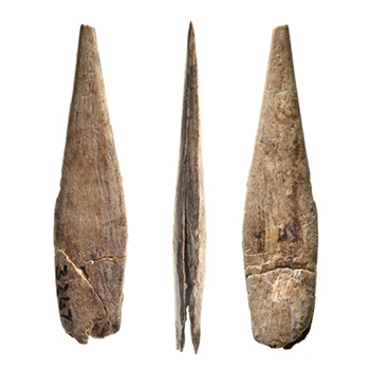
- Home
- Discover the cave
- Humans of Chauvet-Pont d'Arc
- Everyday life
During the long episode of glacial cold which took place 36,000 years ago, the way of life of Aurignacian hunters in Europe was closely dependent on their technical ability to take advantage of the abundant game of the steppes and tundra, and to organise their habitations and subsistence in these regions. The immense herds of herbivores were therefore their preferred game: reindeer, horse and bison.
Habitation and tools
We know of Aurignacian habitations in the form of open-air camps and dwellings in shelters or cave entrances. The interior of the habitation was organised around structured hearths. In the occupation areas, we find abundant stone and bone remains, together with many pigments (red ochre and manganese), the colour of which still impregnates the surrounding sediments. In the north of Europe, from the Danube valley to the Russian plains, we have found habitations constructed from the numerous mammoth skeletons.
The most typical hunting equipment consists of spear points made from organic materials whose split or lozenge-shaped bases allowed them to be solidly attached to a shaft, and numerous flint projectile weapons. The latter were sometimes small projectile points similar to arrowheads and finely retouched bladelets which formed the barbs of composite points.
Nomadism and seasonality
The residential mobility of the Aurignacians was directly linked to the seasonal movement of herbivore populations. Their subsistence techniques indicate this mobility through the movement of flints and projectile points which were carried by the hunters, and through that of the personal ornaments made of shell which we find abandoned far from the coasts of the period. The distances travelled by these various items attest to the nomadism of these populations during the European Upper Palaeolithic.



